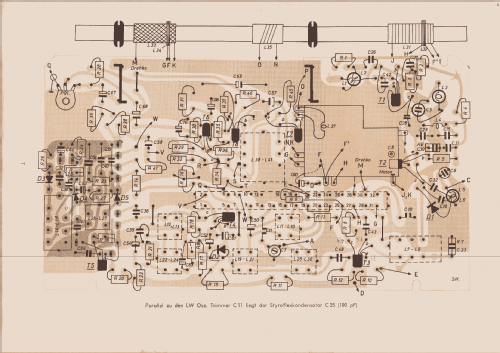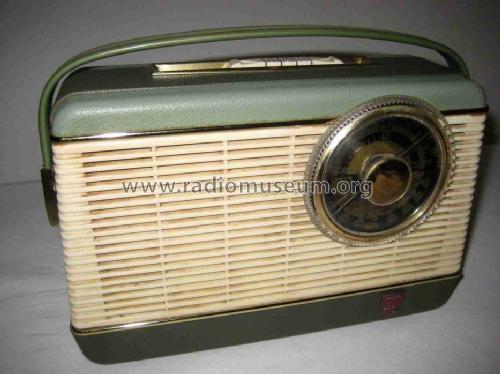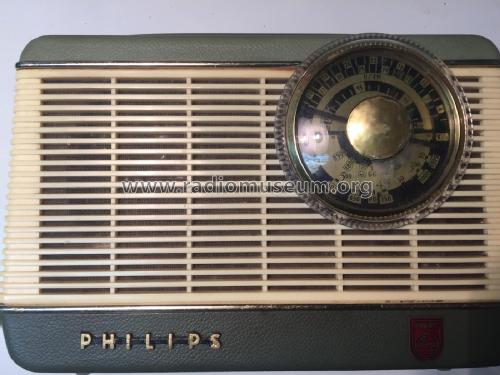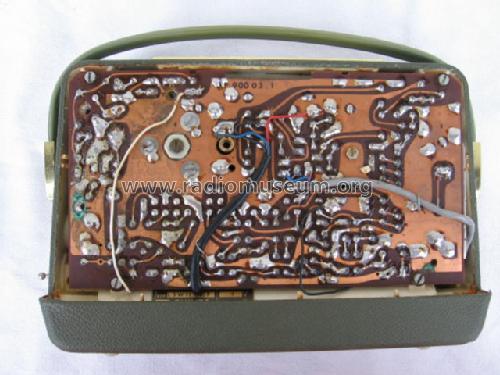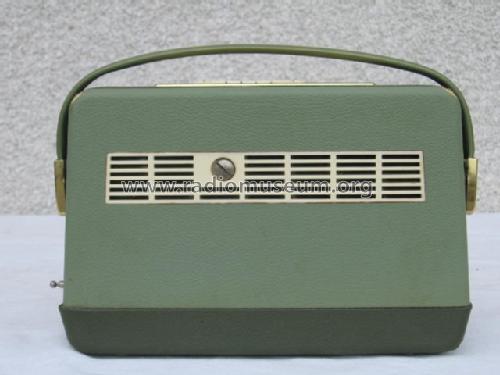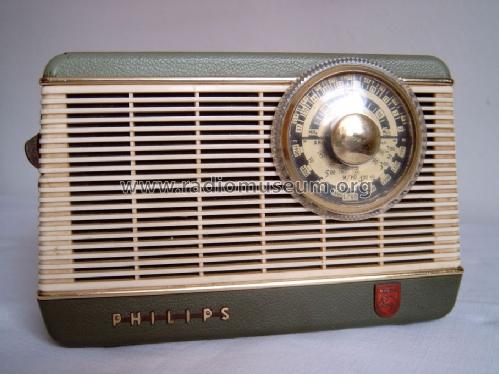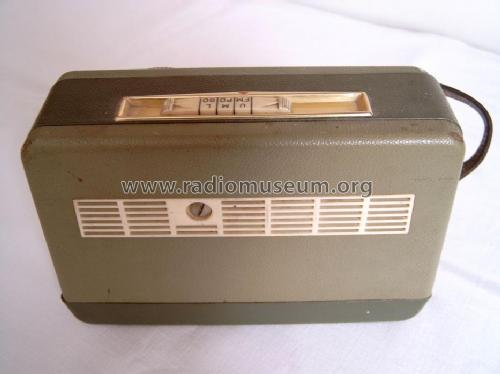Holiday L3W11T /30F
Philips - Österreich
- Country
- Austria
- Manufacturer / Brand
- Philips - Österreich
- Year
- 1961/1962
- Category
- Broadcast Receiver - or past WW2 Tuner
- Radiomuseum.org ID
- 73396
Click on the schematic thumbnail to request the schematic as a free document.
- Number of Transistors
- 8
- Main principle
- Superheterodyne (common); ZF/IF 460/10700 kHz; 3 AF stage(s)
- Tuned circuits
- 5 AM circuit(s) 9 FM circuit(s)
- Wave bands
- Broadcast, Long Wave and FM or UHF.
- Power type and voltage
- Dry Batteries / 6x1,5 Volt
- Loudspeaker
- Permanent Magnet Dynamic (PDyn) Loudspeaker (moving coil)
- Material
- Leather / canvas / plastic - over other material
- from Radiomuseum.org
- Model: Holiday L3W11T /30F - Philips - Österreich
- Shape
- Portable set > 8 inch (also usable without mains)
- Dimensions (WHD)
- 200 x 135 x 64 mm / 7.9 x 5.3 x 2.5 inch
- Notes
-
Ausführung /30F = grün/dunkelgrün.
Parallelgerät zum Horny SA6128T.
- Net weight (2.2 lb = 1 kg)
- 1.2 kg / 2 lb 10.3 oz (2.643 lb)
- Price in first year of sale
- 1,350.00 ATS
- Source of data
- Radiokatalog Band 2, Ernst Erb
- Mentioned in
- -- Original-techn. papers.
- Literature/Schematics (1)
- RADIOBOTE, Österr. (Heft 69/2017, S.11 ff, Gerätebeschreibung)
- Author
- Model page created by Wolfgang Bauer. See "Data change" for further contributors.
- Other Models
-
Here you find 1075 models, 1009 with images and 853 with schematics for wireless sets etc. In French: TSF for Télégraphie sans fil.
All listed radios etc. from Philips - Österreich
Collections
The model Holiday is part of the collections of the following members.
Forum contributions about this model: Philips - Österreich: Holiday L3W11T /30F
Threads: 1 | Posts: 1
Der Philips Holiday L3W11T war das erste in Österreich entwickelte und in Wien in Großserie produzierte Eurogerät. Dieses Radio wurde in grossen Stückzahlen hergestellt und ein Grossteil der Produktion ging in den westeuropäischen Markt. Aber auch andere Philips-Produktionsstätten in Europa haben bei Bedarf dieses Radio in der gleichen Ausführung erzeugt. In Österreich produziert müsste eigentlich die Typenbezeichnung L3A11T lauten. Nun wäre interessant was das W in der Typenbezeichnung bedeutet. Ist es ein Hinweis auf Wien oder eher auf Westeuropa?
Quelle: Radioschau Heft 4, 1961
Gerhard Heigl, 28.Oct.06

